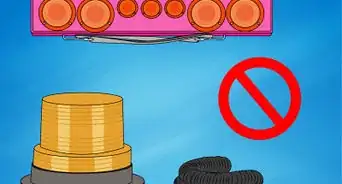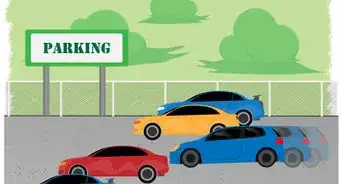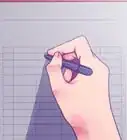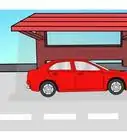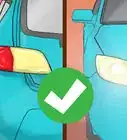This article was co-authored by Simon Miyerov. Simon Miyerov is the President and Driving Instructor for Drive Rite Academy, a driving academy based out of New York City. Simon has over 8 years of driving instruction experience. His mission is to ensure the safety of everyday drivers and continue to make New York a safer and efficient driving environment.
There are 8 references cited in this article, which can be found at the bottom of the page.
wikiHow marks an article as reader-approved once it receives enough positive feedback. In this case, several readers have written to tell us that this article was helpful to them, earning it our reader-approved status.
This article has been viewed 279,969 times.
There are plenty of ways to save money on gas, but the most effective way is to actually reduce the amount of gas you use. When we find we must use the car to reach our destination, there are tricks that might cut back on gas consumption.
Steps
Modifying Your Driving
-
1Drive at the speed limit. This is the single most effective and easiest solution to increasing gas efficiency. The most fuel-efficient speed may be the point at which your vehicle shifts to high gear. For most vehicles, this is somewhere around 50 mph (80 km/h).[1]
- In fact, every 5 mph (8.0 km/h) you go over 50, you can assume you're spending an extra $.25 a gallon on gas.[2] Your efficiency decreases significantly the faster you go.
- What's more, lights are often timed to the speed limit. If you go faster than necessary, you're just stopping and starting anyway – which is also bad for saving gas.
-
2Avoid tailgating and constantly hitting the brakes. You can avoid wasting fuel by not tailgating. In these instances, you'll often be pressing the gas to regain the speed lost from braking which forces you to correct your following distance by applying your brakes, causing a vicious cycle. This constant up and down uses up more fuel than just driving steadily and at a safe distance.
- Repeated braking simply wastes energy, converting it into unnecessary heat energy and greatly reduces the service life of your brakes. In the future most cars may be equipped with systems in which braking power will be converted into reusable energy, but it is highly unlikely that your car has this technology now unless it is a hybrid.
Advertisement -
3Accelerate slowly. Every time you punch the gas to quickly accelerate after stopping you are burning extra fuel and increasing tire wear. By accelerating more slowly you are only using the fuel required to get the vehicle to the cruising speed.
- In short, you want to use the gas and brake pedals as little as possible. Keeping that in mind while driving will keep your gas usage to a minimum.
-
4Drive smoothly and stick to one lane. Fuel consumption increases when you allow the vehicle speed to drift lower and then compensate by accelerating back up. Maintaining a steady position on the accelerator keeps the gas flowing minimally. Allowing the car to lose speed going up hills and gain speed going down increases efficiency.
- And as for weaving, don't do it. It's for much the same reason – when you weave in and out of lanes, you're constantly speeding up and slowing down. Relax and stick to one lane.[3]
-
5Avoid turning across oncoming traffic. If your route will allow it, try to make as few left turns as possible on the way to your destination (or right turns in countries with left-hand traffic). Stopping and waiting at an intersection to make a turn across the oncoming lane lets the engine run idle, which wastes gas, as does accelerating once again to make the turn.[4]
-
6Use overdrive and cruise control on the highway. Another way to keep your foot off the brakes and the gas pedal is to use overdrive and cruise control on the highway. Overdrive keeps your engine's speed down, extending the life of your engine, too.[5]
- Cruise control keeps your car going at a steady rate, allowing the gas a break from pumping too hard or not pumping enough. However, it's only useful in stretches – don't bother using it in town, you'll be stopping and starting too much for it to make any difference.
-
7Use gears wisely. Higher gears at low speed and vice versa will lead to lose of more fuel. Shift gears carefully and according to the desired speed. This will cause less strain on your engine.
Modifying Your Habits
-
1Drive until your tank is close to empty. This part is just science: a lighter car uses less gas. What can make your car lighter? Not having a full tank. So when you hit that 1/3 of a tank and are tempted to fill up, give it a couple days. That last 1/3 of a tank may last you a bit longer than the first third did.
- That being said, it's generally true that gas prices spike up on the weekends, starting on Thursday afternoons. So if you think you'll need gas on Saturday, it might be wise to fill up now. Scope out any especially good gas prices to see if it's worth buying now.[6]
-
2Avoid excessive idling. If you idle your car for more than a minute, it will save gas to turn off the engine. Also, new cars do not need to be "warmed up" on a cold winter day – a couple of seconds should do the trick.
- Whenever you're waiting for someone, turn off the idle. Drive thru or going inside? Going inside. You can still play the radio without idling!
-
3Turn the gas nozzle upside-down when you're done filling up.[citation needed] The gas nozzle is just connected to a regular hose. When you turn the hose off, there's still all that gas in the line. To get that last 1/2 cup of gas (that's 4 ounces of free gas!), turn the nozzle upside-down and give it a shake before you take it out of your tank.
- Lift up the hose a bit to get the gas resting in the line. Gravity causes the gas to lie at the lowest point, so lifting it up gets it out of there and into your tank.
-
4Avoid rolling down your windows at high speeds, or using the air conditioning at all. The better cooling method at freeway speeds depends on your car. Rolling down the windows creates drag, and using the air conditioning causes your engine to work harder. However, rolling down the windows is okay in city traffic.[7]
-
5Park in the shade. More science! The cooler your car is, the less gas will evaporate from your tank.[8] That's like giving money to the sky.
- And did we mention that your bum doesn't get seared on contact? It's better for your car and for you. It's hard to drive when you can't touch the steering wheel without burning yourself!
-
6Try to avoid traffic and bad weather. Fuel economy is worse in busy, high-traffic times or when it is raining, windy or when barometric pressure is high. Rain, headwind and high barometric pressure create extra air drag that uses more fuel to create and maintain forward motion.
- However, a tailwind (a wind behind you) helps. Which direction is the wind coming from?
- It should come as no surprise that high-traffic times are not good for fuel efficiency. You're stopping and starting, idling, weaving, and probably taking part in just about every bad habit for your fuel economy.
-
7Turn all electronics and climate control off before you cut the engine. Sure, when we cut the engine, everything goes off, but what about when we start it back up? If you turn everything off, the next time you start up your car, it'll take way less gas to get everything going.[citation needed] You can then turn everything on one at a time, which is much easier for your car to handle.
-
8Reduce the number of times you have to drive by thinking ahead. Try to consolidate errands and appointments. Get all your errands done in one go to increase your free time, too. You can also plan your trip on certain days to avoid traffic and paying higher gas prices the next week.
- For example, buy non-perishable necessities (including pet food, toilet needs, dry goods, and canned groceries, etc.) in bulk so you don't have to make a special trip for a few items.
Modifying Your Car
-
1Make your car lighter. Get rid of any unnecessary weight in your car or truck, such as golf clubs or unnecessary tools and materials. Lowering the tailgate on a pickup truck actually reduces your gas mileage by reducing drag, too. If the tailgate isn't lowered, an air cushion is created behind the cab that creates a low drag surface for the air to travel over.
- But if you have to carry something, carry it in your trunk, not on the rack on top of your car. With something on top of your car, there is way more drag, slowing your car down, making it more difficult to accelerate.
-
2Change your air filter. A dirty air filter will rob the engine of power and efficiency. It will use more gas than a clean filter. So if it's been a while, get it changed. It should only take a few minutes – in fact, you may be able to do it yourself.
- In the scheme of car parts to replace, air filters are pretty cheap. Most are about $30-40.
-
3Keep your tires inflated to the proper pressure. Properly inflated tires will increase your traveling distance on a tank of gas. Keep a tire gauge handy and check the pressure. Tires naturally lose air over time, so don't be alarmed if one or more is low.
- Check your tire pressure more often when the outside temperature changes greatly. Hot tires will have high pressure from expanding air – but if air is let out to the proper amount of pressure, then when cooled they will become too low in the cooler conditions, so you'll need to reinflate them when cooler. Under inflated and greatly over-sized tires have more rolling resistance and this will reduce your miles per gallon (MPG) and cause tire wear from the excessive friction.
- If you do need new tires, get radial ones. They have a low rolling resistance, keeping your car aerodynamic.
-
4Keep your car tuned-up at manufacturer recommended intervals to optimize your miles per gallon. It's a good idea for your fuel economy to change spark plugs and wires on schedule, and the coil(s) when their effectiveness is breaking down (such as shorting internally). The better your engine runs, the more power it will produce using less fuel.
-
5Use synthetic oil in your car to save on fuel consumption. As a bonus, fewer oil changes are needed saving your time and reducing trips to the mechanic as well as less used oil for the environment.
- When you're getting your tune up, ask your mechanic about what oil you should be using for your car and for saving gas. He may be able to throw in a bottle or two with your tune-up.
-
6Use stock tires. Before changing your tires to the modern style thick ones, think again. The more the width, the higher the rolling resistance offered and higher the fuel consumption.
Community Q&A
-
QuestionHow can I save gas at home?
 Paul IveryCommunity AnswerEliminate the air conditioner. It will help reduce the bill.
Paul IveryCommunity AnswerEliminate the air conditioner. It will help reduce the bill. -
QuestionThe information given was very handy, but what about at homes and other places than cars?
 Community AnswerIt is easy, never use your gas in the summer. Only use it in the winter season and use it with a timer so that you don't forget to turn it off if it is for heating. If you heat your water with gas, ensure that your water heater is energy efficient.
Community AnswerIt is easy, never use your gas in the summer. Only use it in the winter season and use it with a timer so that you don't forget to turn it off if it is for heating. If you heat your water with gas, ensure that your water heater is energy efficient. -
QuestionCan driving a car on only one side of the road and taking the left hand side every time save fuel and reduce traffic jams?
 Community AnswerWhat really helps prevent traffic jams from happening is driving according to the speed limit, keeping enough clearance from the car in front of you, and maintaining a steady speed. Depending on your location, however, you should only stay in the left lane if you're passing a slower car.
Community AnswerWhat really helps prevent traffic jams from happening is driving according to the speed limit, keeping enough clearance from the car in front of you, and maintaining a steady speed. Depending on your location, however, you should only stay in the left lane if you're passing a slower car.
Warnings
- Do not tailgate other vehicles (a practice used in racing cars known as drafting) to conserve gas. Though this may help reduce wind drag by letting the other vehicle break the air resistance for you, it is illegal and very unsafe.⧼thumbs_response⧽
- Follow regular maintenance, and read the Owner's Manual that came with the vehicle. The cost of scheduled oil changes may seem expensive, but in the long run they will save gas and greatly reduce engine wear.⧼thumbs_response⧽
- People often "ride" their brakes for no apparent reason other than excessive acceleration and following too closely.⧼thumbs_response⧽
References
- ↑ http://auto.howstuffworks.com/question477.htm
- ↑ Oak Ridge National Laboratory (ORNL): Predicting Light-Duty Vehicle Fuel Economy as a Function of Highway Speed, SAE 2013-01-1113.M
- ↑ http://www.fueleconomy.gov/feg/motorweektranscript.shtml
- ↑ https://priceonomics.com/why-ups-trucks-dont-turn-left/
- ↑ http://www.fueleconomy.gov/feg/driveHabits.jsp
- ↑ http://www.forbes.com/sites/cateyhill/2012/07/02/10-savvy-ways-to-save-on-gas/
- ↑ http://articles.chicagotribune.com/2010-08-05/classified/sc-cons-0805-trans-20100805_1_windows-mileage-ac
- ↑ http://consumerist.com/2010/10/04/park-in-the-shade-and-save-gas/
About This Article
To save on gas, drive at a steady speed and avoid tailgating, which uses up more fuel because you’re hitting the gas regularly. You should also avoid idling your car, which uses gas unnecessarily. When you accelerate, pick up speed slowly so you’re using as little gas as possible to get your car to its cruising speed. Additionally, turn off your climate control and all electronics before cutting the engine, since it takes more gas to turn everything back on at the same time. For tips on how to modify your car to use less gas, keep reading!
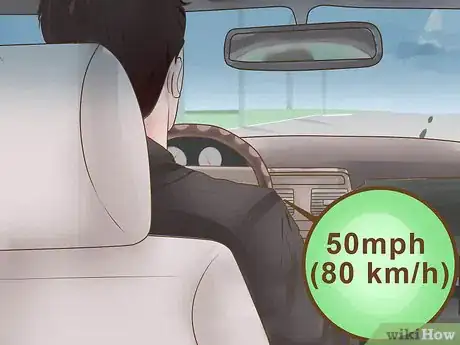

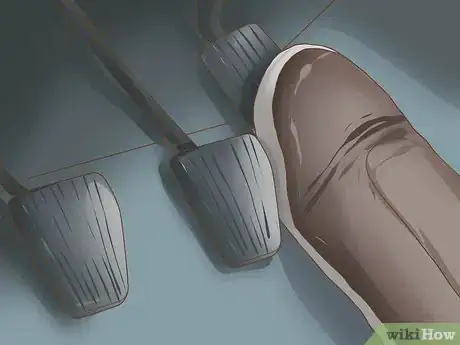

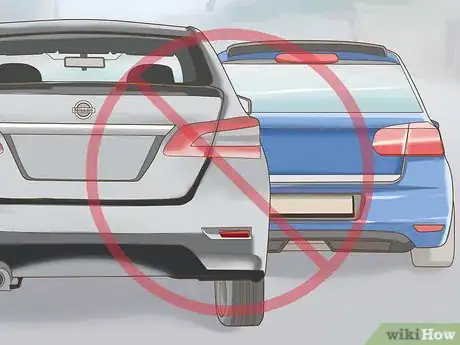
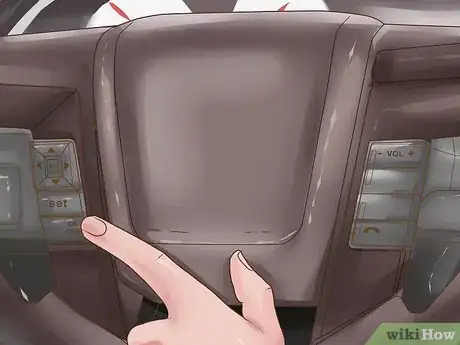
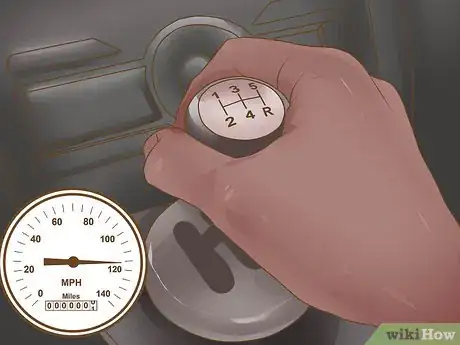

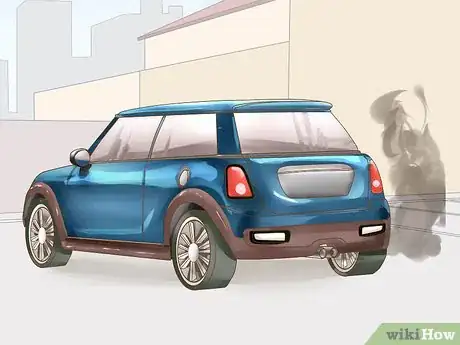
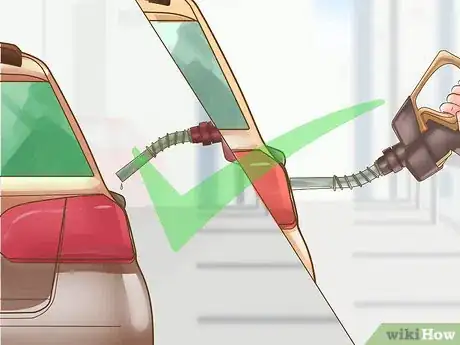
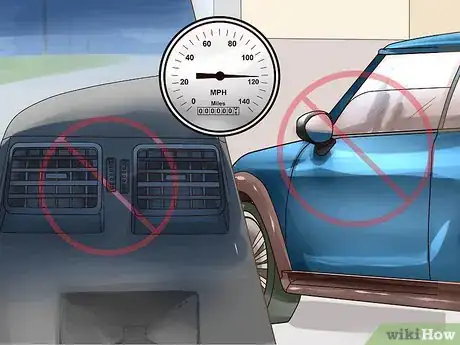
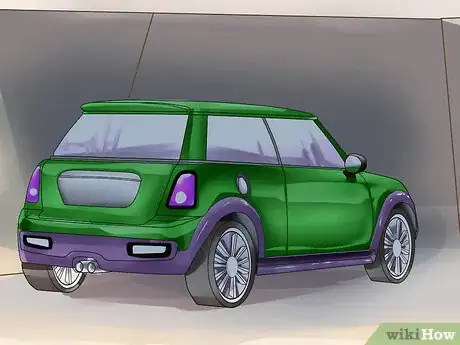
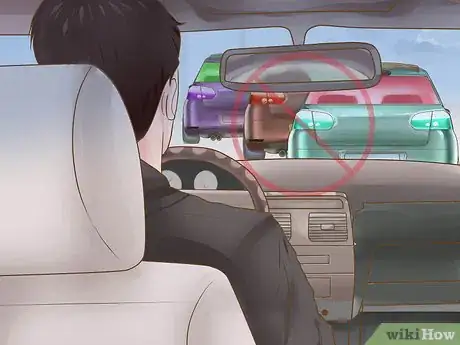
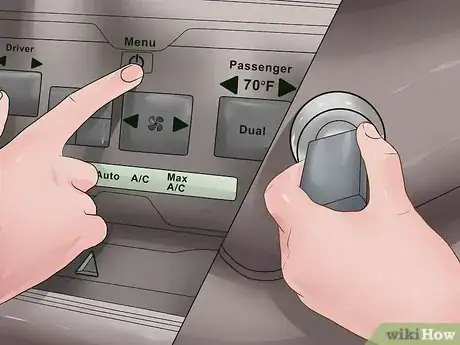

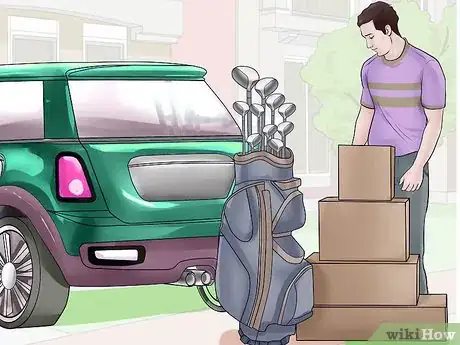
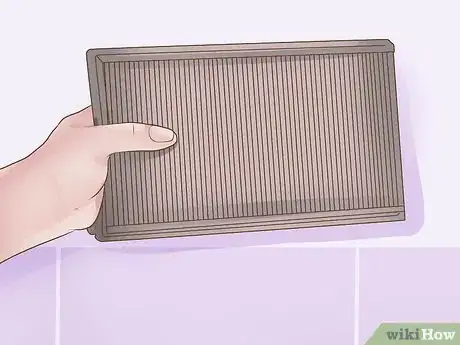

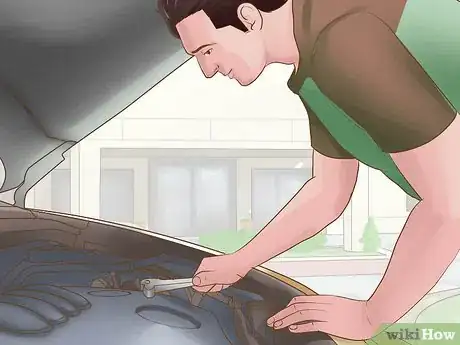
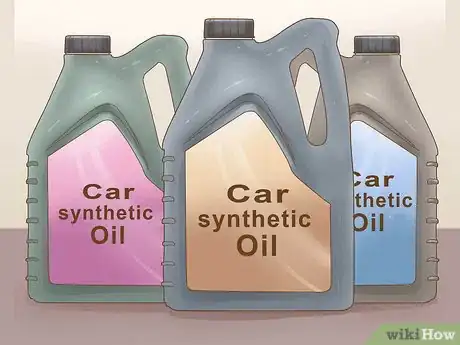

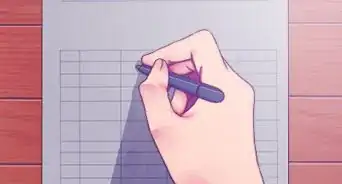

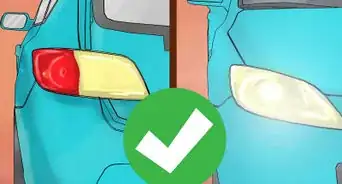

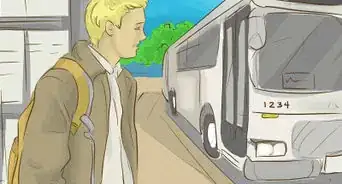


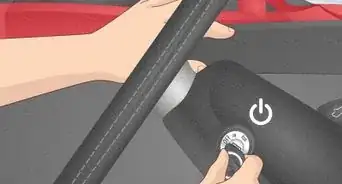
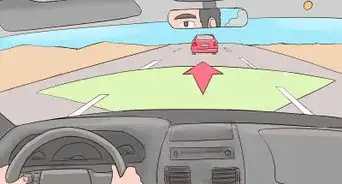
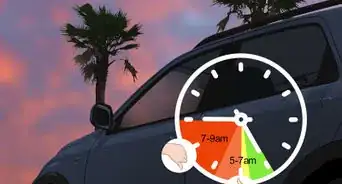
-Step-9-Version-2.webp)
